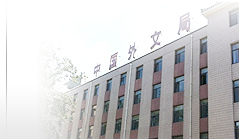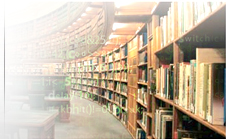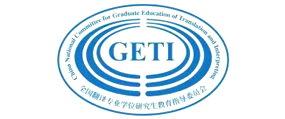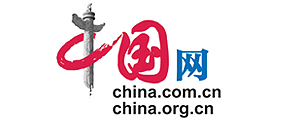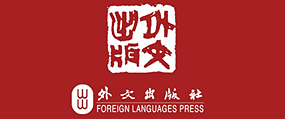译论研究
重读传统译论─目的与课题 / 张佩瑶 5
生态翻译学解读 / 胡庚申 11
基于语料库的翻译汉语词汇特征研究 / 王克非 胡显耀 16
译史纵横
一名之立 名实之辨——“译名之争”所引发的思考 / 陈可培 22
《天主实义》:利玛窦天主教词汇的翻译策略 / 朱志瑜 27
书刊评介
探索翻译研究的社会学途径——评介Michaela Wolf与Alexandra Fukari / 的《建构翻译社会学》 / 李红满 30
翻译教学
有声思维法在翻译教学中的运用——TAPs翻译研究对翻译教学的启示 / 李德超 34
译家译事
悼念著名翻译家裘克安同志 / 施燕华 40
译技探讨
从《哈姆雷特》多个中译本看文学翻译中双关的处理策略 / 周晔 43
翻译过程中语义的散发与整合认知范式研究 / 包通法 49
语用与翻译中言语资源的得体利用 / 陈小慰 55
英文中“副”职的表达方式探析 / 张顺生 60
互文视角下的合同法规翻译 / 王海燕 刘迎春 64
自学之友
·译家译作·
英译汉:Henry Bradshaw(Arthur Christopher Benson) / 刘士聪 译注 69
翻译导读:词义·语境·译入语 / 刘士聪 70
汉译英:九色鹿(陈钰) / 李桂山 译注 72
翻译导读:风格·词语·句子 / 李桂山 74
词语选译
中国译协对外传播翻译委员会中译英研讨会最新讨论词汇选登 / 76
第二十届韩素音青年翻译奖竞赛揭晓
第二十届韩素音青年翻译奖竞赛获奖名单 / 77
第二十届韩素音青年翻译奖竞赛评审工作报告 / 78
第二十届韩素音青年翻译奖竞赛评审委员会名单 / 79
竞赛英译汉参考译文及评析 / 79
竞赛汉译英参考译文及评析 / 85
竞赛获奖译文选登 / 89
英文摘要 / 92
本刊2008年总目录 / 94
信息广角
本刊稿约(10) 本刊征订启事(54) 本刊邮购信息(93)
第十一届宋淇翻译研究论文纪念奖征集论文(68)
第十八届世界翻译大会光盘版《论文集》邮购信息(75)
其它(21、26、42、96)
中文摘要
重读传统译论──目的与课题*
张佩瑶 香港浸会大学
摘 要:近年不少翻译学的学者尝试了解其它的翻译传统,以求建立起认受性更高的翻译理论。然而,我们对于自己的翻译传统,掌握得又有多深?本文试从推动本土及国际翻译学发展的角度,阐释重读/阅读传统译论的重要,并探讨传统译论中可供研究的课题。
关键词:传统译论;汉籍外译;国际翻译学;软实力;文化亲和力
中图分类号:H059 文献标识码:A 文章编号:1000-873X (2008)06-0005-06
生态翻译学解读*
胡庚申 清华大学
摘 要:本文阐述了“生态翻译学”研究的基本内涵、产生背景、目前状况、现有研究的局限与不足、以及未来研究的发展空间。这里的生态翻译学,并不是一个独立 的学科门类,而可以理解为一种生态学途径的翻译研究,抑或生态学视角的翻译研究。生态翻译学着眼于翻译生态系统的整体性,从生态翻译学的研究视角,以生态 翻译学的叙事方式,对翻译的本质、过程、标准、原则和方法以及翻译现象等做出新的描述和解释。文章指出,生态翻译学是一种跨学科的、多学科交叉的产物,与 时代社会和学术发展的方向是相符合的;同时,它也是从新的视角对当代翻译学理论研究的一种延伸,反映了译学理论研究由单一学科视阈转向跨学科整合一体的发 展趋势。
关键词:生态翻译学; 生态学途径; 翻译生态系统; 翻译适应选择论
中图分类号:H059 文献标识码:A 文章编号:1000-873X (2008)06-0011-05
基于语料库的翻译汉语词汇特征研究*
王克非 北京外国语大学 胡显耀 西南大学
摘 要:本文通过“通用汉英对应语料库”中翻译汉语与原创汉语语料的分析和对比,考察翻译汉语区别于汉语原创语料的词汇使用特征。语料库研究表明:无论是文 学还是非文学语料,翻译汉语与原创汉语相比,具有词语变化度偏低、词汇密度偏低,虚词显化,指代方式显化,常用词频率增加等特征。文中还就这些特征探讨了 “翻译共性”问题。
关键词:语料库;翻译汉语;词汇特征;翻译共性
中图分类号:H059 文献标识码:A 文章编号:1000-873X (2008)06-0016-06
一名之立 名实之辨——“译名之争”所引发的思考
陈可培 长沙理工大学
摘 要:理雅各在19世纪的 “译 名之争”中深入中国经典,挖掘两种宗教、文化契合的可能性;其立场、观点和翻译方法体现了对他者开放的态度。本文将“译名之争”所引发的问题与中西哲学史 上关于名与实的探讨结合起来,从不同宗教、文化相遇时的冲突、摩擦以及契合的可能对中西文化交流的途径和意义作深入的思考。
关键词:上帝;译名之争;名与实;理雅各
中图分类号:H059 文献标识码:A 文章编号:1000-873X (2008)06-0022-05
《天主实义》:利玛窦天主教词汇的翻译策略
朱志瑜 香港理工大学
摘 要:利玛窦是早期基督教词汇的翻译者之一。本文讨论利玛窦在以教理问答形式写成的《天主实义》这本书中基督教词汇的翻译方法。利玛窦在翻译过程中用他独有的方式,把儒家经典和基督教教义联系了起来,从而冲破了儒家壁垒。这种翻译方法在世界翻译历史上不多见。
关键词:翻译策略,利玛窦,基督教词汇,圣经翻译
中图分类号:H059 文献标识码:A 文章编号:1000-873X (2008)06-0027-03
从《哈姆雷特》多个中译本看文学翻译中双关的处理策略*
周 晔 国防科技大学
摘 要:目前翻译界对双关的翻译研究尚欠深入,不少人存在悲观情绪,认为双关不可译。本文认为在双关的翻译中,译文的连贯性始终是困扰译者的一大问题。译者 要传达双关的双重语境并保持连贯,关键在于铰链的选择和重构。通过对《哈姆雷特》多个中译本的对比研究,总结出双关在文学翻译中的可行性和基本策略。
关键词:哈姆雷特;双关;铰链; 文学翻译; 连贯性
中图分类号:H059 文献标识码:A 文章编号:1000-873X (2008)06-0043-06
Contents
On the Why and the How of Re-reading Traditional Chinese Discourse on Translation Martha / P. Y. Cheung 5
Eco-translatology: A Primer / Hu Gengshen 11
A Parallel Corpus-based Study on Lexical Features of Translated Chinese / Wang Kefei & Hu Xianyao 16
Reflections on the Translation of Culture-defining Key Terms / Chen Kepei 22
Matteo Ricci’s Tianzhu shi yi (The True Meaning of the Lord of Heaven) and His Strategies for Translating Christian Terms into Chinese / Chu Chiyu 27
Thinking Aloud as a Useful Tool in Translator Training / Li Dechao 34
What Chinese Versions of Hamlet Tell Us about Translating Puns in Literary Texts / Zhou Ye 43
Semantic Discreteness and Integration in Translation / Bao Tongfa 49
Pragmatics and Appropriate Use of Symbolic Resources in Translation / Chen Xiaowei 55
An Intertextual Perspective on the Translation of Contract Laws and Conventions / Wang Haiyan & Liu Yingchun 64
E/C Translation Practice: Henry Bradshaw (Arthur Christopher Benson) / Liu Shicong 70
C/E Translation Practice: The Deer of Nine Colors (Chen Yu) / Li Guishan 72
Abstracts of Major Papers in This Issue / 92
Abstracts of Major Papers in This Issue
On the Why and the How of Re-reading Traditional Chinese Discourse on Translation
by Martha P. Y. Cheung (Hong Kong Baptist University, China) p.5
Abstract: In a collective bid to broaden translation theory’s scope of application, scholars around the world have been turning their attention to non-native discourses on translational practices. Yet how much do we know about our own tradition of conceptualizing translation? This article urges that Chinese scholars concerned turn their attention inward first and attach more importance to re-reading traditional Chinese discourse on and about translation. Arguing that this is the right approach to promoting both Chinese and international translation studies, the author also identifies some neglected topics and issues in traditional Chinese theories of translation as especially worthy of exploring.
Key words: tradition; Chinese discourse; translation; Chinese-to-English translation; international translation studies; soft power; cultural affinity
Eco-translatology: A Primer by Hu Gengshen (Tsinghua University, China) p.11
Abstract: A new model for translation studies, eco-translatology attempts to describe and interpret translation from an ecological perspective, taking as its conceptual foundation the assumption that translation could best be understood in terms of a harmonious eco-system. This article offers a brief introduction to eco-translatology, looking back at its origin and subsequent development, defining its current status and existing problems, and exploring the directions in which it might expand further. Although still in the initial stage of its development, this multidisciplinary approach reflects the trend toward theoretical diversification in translation studies and may mark a new point of departure for the discipline as a whole.
Key words: Eco-translatology; ecology; translation; adaptation; selection
A Parallel Corpus-based Study on Lexical Features of Translated Chinese
by Wang Kefei (Beijing Foreign Studies University, China) & Hu Xianyao (Southwest University, China) p.16
Abstract: This article identifies the salient lexical features of Translated Chinese (TC) by comparing it on the basis of the General Chinese-English Parallel Corpus with Non-translated Chinese (NTC). The corpus-based study of the two modes of Chinese finds that in contradistinction to NTC, TC is characterized by low lexical variety (type-token ratio), low lexical density, greater explicitation of functional words and pronoun usage, and a higher incidence of common words. These lexical features lend support to the hypothesis of translation universals.
Key words: corpus; Translated Chinese; lexical feature; translation universal
Reflections on the Translation of Culture-defining Key Terms
by Chen Kepei (Changsha University of Science & Technology, China) p.22
Abstract: In the 19th-century debate over how to translate Western key terms into Chinese, James Legge insisted that one turn to the Chinese classics for equivalents of these terms. By taking the position, he expressed his conviction of a fundamental correspondence between the two religions/cultures in question and showed an open-minded attitude towards the cultural other. Reexamining the issues which the 19th-century debate had generated and reconsidering them in conjunction with the more general issues over the name/substance dichotomy in philosophical debates, this paper reflects on possible approaches to, as well as the significance of, a cultural communication between China and the West.
Key words: translation; God; name; nature; James Legge
Matteo Ricci’s Tianzhu shi yi (The True Meaning of the Lord of Heaven) and His Strategies for Translating Christian Terms into Chinese
by Chu Chiyu (Hong Kong Polytechnic University, Hong Kong, China) p.27
Abstract: In compiling Tianzhu shi yi (The True Meaning of the Lord of Heaven), Matteo Ricci made one of the first attempts to translate Christian terminology into Chinese. A close reading of this catechism in Chinese shows that Ricci did not adopt a “domesticating” approach, as Nida would later recommend. Instead, in turning the Confucian terminology to his own use and bringing about a fusion of Confucianism and Christianity, he employed a strategy of translation that could only be described as “foreignizing” in today’s terms. The adeptness with which Ricci applied the foreignizing method is rarely seen in the history of translation.
Key words: translation strategy; Matteo Ricci; Christianity; terminology; Bible translation
What Chinese Versions of Hamlet Tell Us about Translating Puns in Literary Texts
by Zhou Ye (National University of Defence Technology, China) p.43
Abstract: Many translation scholars are convinced that pun is untranslatable, which has prevented them from deepening their study of pun translation. This essay calls the belief into question by comparing multiple Chinese versions of Shakespeare’s Hamlet. The comparison not only establishes the feasibility of pun translation, but throws light on the basic strategies to adopt for the operation.
Key words: Hamlet; pun; hinge; literary translation; coherence

